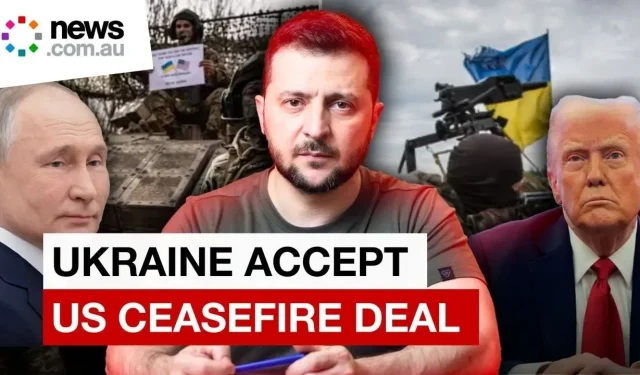In a significant diplomatic breakthrough, Ukraine has agreed to a 30-day ceasefire with Russia, responding positively to a proposal from the United States. This development comes after three years of intense conflict that has resulted in substantial loss of life and destruction.
Details of the Ceasefire Agreement
During crucial talks held in Saudi Arabia, Ukrainian officials expressed their willingness to engage in immediate negotiations with Russia. The offer for the ceasefire, backed by the Trump administration, also includes commitments from the United States to lift previous restrictions on military aid and intelligence sharing with Ukraine. This shift in US policy reflects a strategic pivot aimed at facilitating peace negotiations.
Political Dynamics and Implications
President Donald Trump’s administration, which has previously maintained a complex relationship with both Kyiv and Moscow, applied pressure on Ukrainian officials to accept the ceasefire proposal. This unexpected move highlights a broader geopolitical strategy that seeks to recalibrate alliances in the region.
Ukrainian representatives arrived at the talks with a desire to forge a path forward, initially proposing a limited truce focusing on air and sea combat operations. However, following discussions, they accepted US advisors’ recommendations for a more comprehensive ceasefire covering all fronts in the conflict.
Statements from US Officials
Following the negotiations, US Secretary of State Marco Rubio addressed the media, stating, “Today we made an offer that the Ukrainians have accepted, which is to enter into a ceasefire and into immediate negotiations.” He emphasized that the next step lies with Russia: “We’ll take this offer now to the Russians and we hope they’ll say yes to peace. The ball is now in their court.”
Rubio’s comments underscore the gravity of the moment, as a potential rejection by Russia could reveal its position on achieving a peaceful resolution to the ongoing conflict, marking a pivotal point for international relations in the region.
Historical Context of the Conflict
Since the start of the full-scale Russian invasion of Ukraine in February 2022, the war has escalated into one of the most devastating conflicts in modern history. Estimates suggest that tens of thousands of lives have been lost, while substantial portions of Ukraine’s infrastructure have been destroyed. The announcement of the ceasefire comes at a time when both sides are weary of prolonged warfare, which could shift the narrative around the conflict towards resolution.
Potential Consequences of the Ceasefire
The acceptance of this ceasefire by Ukraine could potentially pave the way for lasting peace negotiations, should Russia reciprocate. Analysts will be closely monitoring Russia’s response, as the ramifications could affect military strategies and international relations significantly. Success in these negotiations may lead to the easing of sanctions against Russia and a reevaluation of military aid frameworks, both for Ukraine and other nations affected by similar conflicts.
Conversely, failure to engage in meaningful dialogue following this ceasefire could reignite hostilities, further complicating the geopolitical landscape and potentially drawing in other international actors into the conflict.


